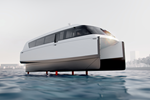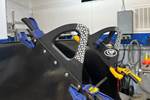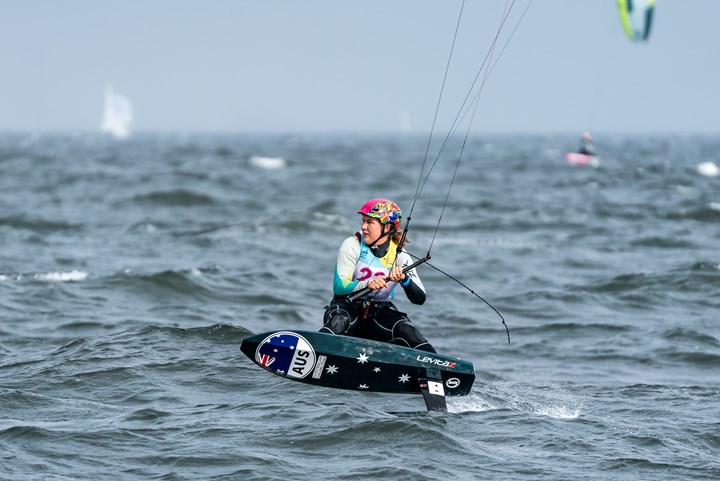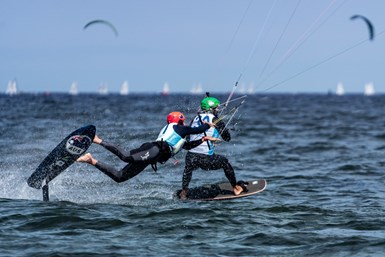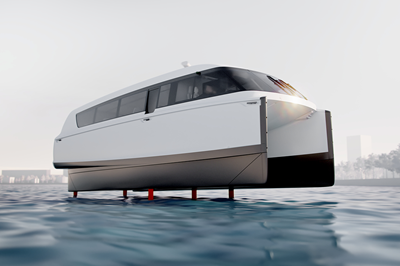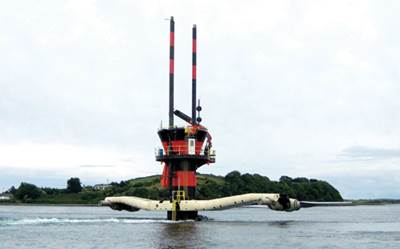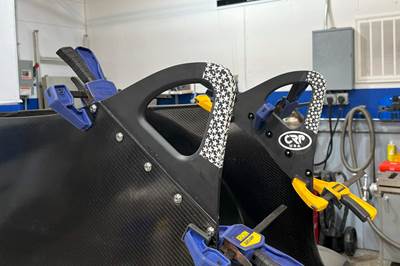ATL Composites collaboration advances kite-foil board production for Paris Olympics
Breiana Whitehead, pioneering Australian kite-foil sailor, spearheads board design intricacies with ATL Composites to enhance her performance ahead of the July 2024 competition.
To prepare for the Paris 2024 Olympic Games taking place in July, Australian kite-foiler Breiana Whitehead has collaborated closely with ATL Composites (Molendinar, Queensland, Australia) to fine-tune the design and construction of boards crucial to her performance on the waters of Marseille.
Brieana has the distinction of being the first kite-foil sailor to be selected for an Australian Olympic team and the first sailor officially selected for the Paris 2024 Australian Olympic Team. The 23-year-old athlete has just competed in Sail Melbourne and Sail Sydney, before returning to Europe for more training and regattas pre-Olympics in Marseille.
Along with her prowess on the water, Breiana has a good of understanding and a strong interest in composites. She is a qualified mechanical engineer and has been involved in every step of process of making her boards for the upcoming competition — shaping, cutting, using the router, making changes to the CAD drawings and testing the boards along the way. She’s also had hands-on experience helping repair her sailing gear over the years, and has worked with C-Tech Ltd. (Auckland, New Zealand) while she was in the country training.
To Whitehead, the board and board design is a vital ingredient to racing well. “The board affects how the body connects to the foil, how much force I can push through the foil, and therefore the speed I can get out of it when racing,” she explains.
Kite-foiling is a new Olympic class making its debut at Paris 2024. Kite-foil sailors can reach speed in excess of 38 knots (70 kilometers per hour) as they maintain their balance and manage racing tactics, competitors’ lines and kites, and the challenges of waves and wind. Originating popularly in San Francisco, kite-foil racing has gradually developed. The introduction of carbon fiber foils changed the game in terms of its speed, and since then, it has be adopted around the world.
“In the beginning, it was basically ‘bring your own home-made gear and do whatever you like,’” says Murray Whitehead, originally from Port Lincoln, South Australia, and a boatbuilder by trade. “It was virtually an arms race, and expensive. People were buying all the best gear, and it was all about who you knew or what you could build. Now, it’s a more level playing field and while there’s no ‘one design,’ you do have to register your designs.”
In the past 7 years, kite-foiling has evolved under the direction of Markus Schneider, who has become an advocate for the sport, promoting its speed, skills and spectator appeal to the attention of the IOC to make a class now called Formula Kite.
The kite-foiling setup is comprised of three main pieces of equipment: the mast, the foils (wings) and the board. “The slightest pin hole in the foil, a scratch or fingerprint with sunscreen will cause ventilation, where air bubbles are trapped on the surface of the foil. This will cause the foil to lose lift, become unsteady and throw you off — this can be very dangerous,” Murray explains. Describing the sport as the “F1 of sailing,” Murray adds, “Only a limited number of people are able to make the foils in quantity to the specifications required by the International Kite-boarding Association [IKA] and adopted by World Sailing. Several companies registered, then it came down to two companies: Austrian Levitaz and Italian Chubanga.”
A crucial part of the gear is the board, and that’s where ATL Composites became involved. From his many years of boatbuilding, Murray knew of ATL Composites and was a seasoned user of the company’s West System range of epoxy products.
“I’ve been making and repairing carbon kite-foiling gear from the early days,” he notes. “Now that there are good commercial foils and they need to be registered, we were able to work testing with Levitas in the pre-registration period and now we concentrate on the boards that support the foil and rider. The board is a crucial element. Its shape is critical to getting up on the foil and interacting with the water through waves and maneuvers so as not to throw the rider off.”
ATL Composites’ CNC milling capabilities took making the core and shaping the board from one week down to three hours.
“We made boards freehand like surfboards, and we experimented a lot over the years,” he continues. “Some of the commercial boards were too weak. I have repaired a lot of boards for riders, and over that time, I’ve observed the failures and stress points with all the designs, so we set about to make a design that would last a whole European season. We devoted many hours of studying how they work, with both Breiana and Scott’s [Brieana’s brother’s] input and feedback … and hours of watching the board-water interaction from the tender.”
Breiana’s boards are made entirely of carbon fiber over a foam core to provide structural rigidity and prevent water absorption. Murray says that they are shaped to a fine finish with crisp lines, a tuttle (socket to attach foil to board) that won’t crack and foot-straps that don’t pull out.
“There’s a lot involved,” Murray states. “Aside from the dimensions to create a volume that you need to get all this rigidity, the tuttle has to be made and inset with an extremely tight fit with the mast, exactly in the right location and at the right angle. That’s the trickiest part of the equation.”
Knowing that they would need more boards pre-Olympics, Australian Sailing engaged the Australian Institute of Sport (AIS) in Canberra, which has very accurate scanning equipment, to create data files of the Whitehead’s best and most recent board.
“Then we looked at what materials we could use,” Murray says. “Divinycell foam core is a great product in boatbuilding, but a little heavier than styrene, which almost all commercial boards are made from. It provides better structural rigidity, doesn’t absorb water and can adopt crisp, complex shapes by hand or CNC, all a plus over styrene. We got in touch with ATL and they researched a foam grade that would suit. Then we provided the file, and ATL CNC milled it to final finish. Most of the racing takes place in Europe and the European Championships were coming up. Breiana needed the board a month prior to get used to it, so it was a tight timeline.”
Kai-Yih Lee from ATL Composites was part of the technical team who worked with Murray, Breiana and her coach, Shane Smith. “Considering their parameters, the lightweight Divinycell H45 foam core was chosen as the core material to allow for maximum weight saving, and West System R105/H206 as the laminating resin,” Lee explains. “Divinycell H is ideal for applications subject to fatigue, slamming or impact loads.”
“We knew that our five-axis flatbed CNC machine wouldn’t be able to machine the board in one go, as it requires the board to be flipped to machine both the top and bottom face,” he continues. “And with some brainstorming, Breiana suggested that we add some temporary supports to the model which will allow the board to sit flat and stable once flipped. These supports can then be removed after machining. Once machined, we sent the board to Murray for final finishing.”
ATL Composites’ CNC milling capabilities took making the core and shaping the board from one week down to three hours. “No more gluing layers together to get rocker, measuring old boards to replicate and the trial and error of freehand,” Murray says. “We had an accurate base to start with, and then fine-tuned it.”
For the finish, “we used West System fillers to crisp up the lines, and tinted the 410 Microlight with 502 West System black pigment to look the same as carbon [fiber]. Then, over the top, we sealed it with West System 207 special clear hardener,” Murray adds. “It’s so versatile. We don’t paint the boards, and we get a pretty good finish with the clear coat over the faired laminating resin — high-level racing is a bit of a rough and tumble, so if damage occurs, it’s a simple prep and epoxy repair.”
Now, with the 2024 Paris Olympics in her sights, Breiana is training hard and refining her knowledge of board building. “She brings skills I don’t have. She’s able to manipulate the CNC data files and has a definite view of how to improve our design. I think it’s great that she wants to learn how to use every hand and machine tool so that she can repair her own boards,” Murray says.
“There has been a lot of trial and error to get to the top,” Breiana notes. “I look forward to continuing working with ATL. It’s great to be able to get expert advice on quality products and concepts to continue to develop the board I’m racing on. For me, it’s really important to have trust in all of the equipment. When I know the gear is reliable, I can push it to the limits.”
Related Content
Manufacturing the MFFD thermoplastic composite fuselage
Demonstrator’s upper, lower shells and assembly prove materials and new processes for lighter, cheaper and more sustainable high-rate future aircraft.
Read MorePlant tour: Albany Engineered Composites, Rochester, N.H., U.S.
Efficient, high-quality, well-controlled composites manufacturing at volume is the mantra for this 3D weaving specialist.
Read MorePlant tour: Spirit AeroSystems, Belfast, Northern Ireland, U.K.
Purpose-built facility employs resin transfer infusion (RTI) and assembly technology to manufacture today’s composite A220 wings, and prepares for future new programs and production ramp-ups.
Read MorePlant tour: Joby Aviation, Marina, Calif., U.S.
As the advanced air mobility market begins to take shape, market leader Joby Aviation works to industrialize composites manufacturing for its first-generation, composites-intensive, all-electric air taxi.
Read MoreRead Next
Sicomin epoxy resins power Candela composite boat construction
Candela’s zero-emission P-12 foiling passenger shuttle offers low vessel weight, higher journey frequency with its carbon fiber-reinforced epoxy fabrication.
Read MoreComposites tap tide energy
Composites-enabled tidal stream energy projects lead the way as new forms of hydrokinetic power generation move toward commercialization.
Read MoreCRP USA 3D printing composites meet critical needs of bobsledding sport
Components critical to a bobsled’s functionality — push handles, hand grips and seats — were tailored from Windform materials, heightening both performance and safety for athletes’ racing in the 2026 Winter Olympics.
Read More

